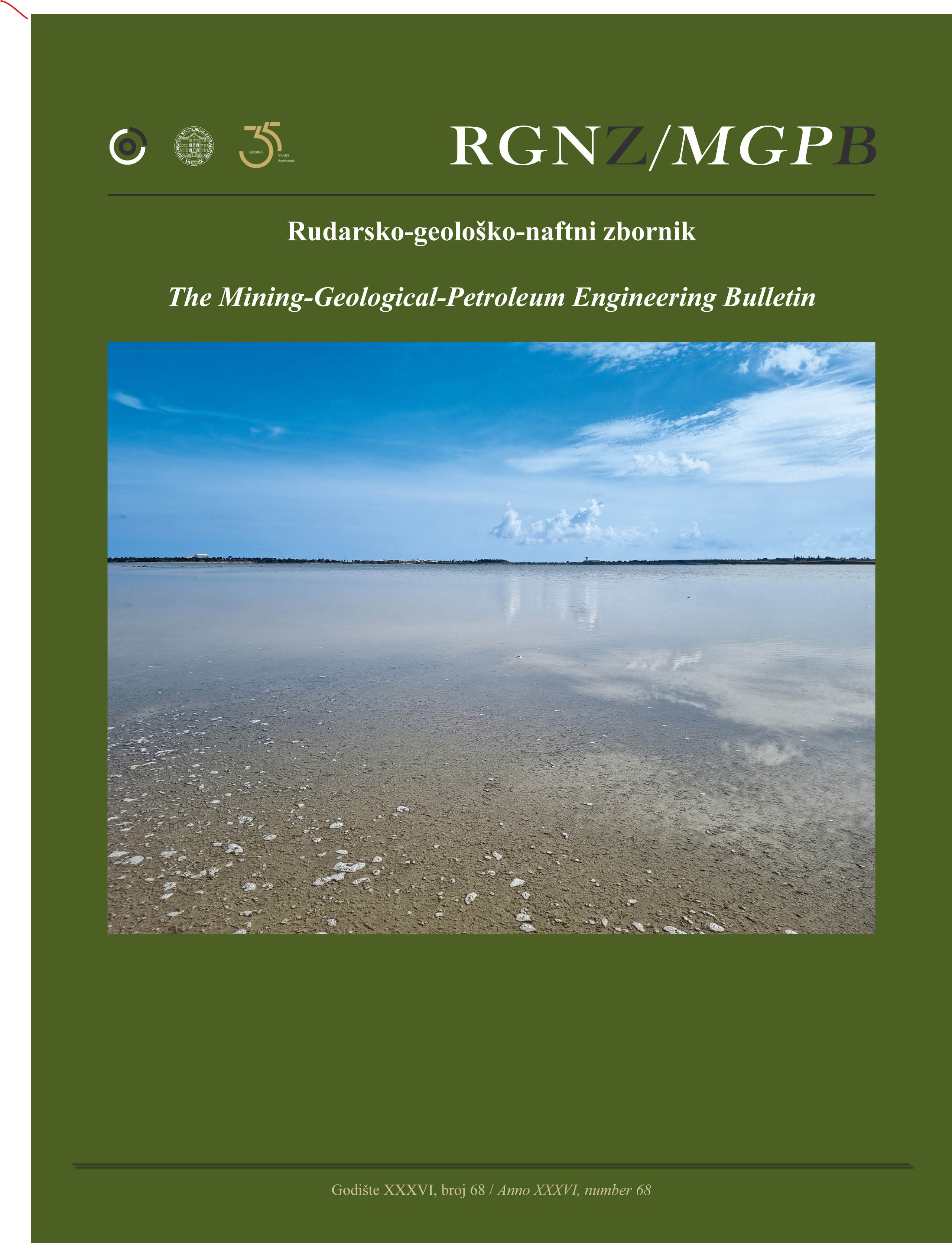Numerical Analysis of Borehole Heat Exchanger Performance in Shallow Gravel Aquifers and Clay-dominated Soil
DOI:
https://doi.org/10.17794/rgn.2024.2.6Keywords:
Borehole Heat Exchanger (BHE), shallow geothermal reservoir, geothermal heating and coolingAbstract
The performance of geothermal heat extraction in shallow aquifers depends on both Borehole Heat Exchanger (BHE) and soil or aquifer properties. In this work, an analysis of the thermal yield of a shallow geothermal reservoir was made numerically with the finite element method used to simulate heat and mass transfer in the three-dimensional reservoir. The main parameters for analysis which have been considered are the geometry and physical parameters of the BHE and grout, as well as aquifer matrix and groundwater fluid. Physical parameters are thermal conductivity, flow conductivity, expansion coefficient, porosity, volumetric heat capacity, anisotropy and dispersivity. The numerical tests have been performed in single BHE line source configuration representing numerically modelled thermal response test for the estimation of sustainable heat extraction. The domain size was a 100x100 meter rectangle with a depth of 200 meters. Three main lithological configurations have been modelled: gravel aquifer with low and high convection of groundwater fluid, as well as a shallow geothermal reservoir dominated by clay material without convection. For selected cases, the analysis for temporal and spatial discretization was also made. Three-dimensional transient modelling was made in FEFLOW® software with pre- and post-processing done in user-defined Python scripts. The results show the most influential parameters to be considered when setting up the real case simulation of geothermal heating and cooling, as well as optimal temporal and spatial discretization set-up with respect to expected thermal gradients in the reservoir.
Downloads
Additional Files
Published
How to Cite
Issue
Section
License
Copyright (c) 2024 Amalia Lekić Brettschneider, Luka Perković

This work is licensed under a Creative Commons Attribution 4.0 International License.
Creative Commons-BY
Authors who publish with this journal agree to the following terms:
In agreeing this form, you certify that:
- You read the ethical codex of the RGN zbornik available at journal web.
- You submitted work is your original work, and has not previously been published and does not include any form of plagiarism.
- You own copyright in the submitted work, and are therefore permitted to assign the licence to publish to RGN zbornik.
- Your submitted work contains no violation of any existing copyright or other third party right or any material of an obscene, libellous or otherwise unlawful nature.
- You have obtained permission for and acknowledged the source of any illustrations, diagrams or other material included in the work of which you are not the copyright owner.
- You have taken due care to ensure the accuracy of the work, and that, to the best of your knowledge, there are no false statements made within it.
- All co-authors of this submitted work are aware of, and in agreement with, the terms of this licence and that the submitted manuscript has been approved by these authors.
Publication licence
You retain copyright in your submitted work, according to journal license policy (CC-BY). By signing this form you agree that RGN zbornik may publish it under the publication licence. In summary the licence allows the following:
Anyone is free:
- To copy, distribute, display, and perform the work.
- To make derivative works.
Under the following conditions:
- The original author must always be given credit.
- The work may not be used for commercial purposes.
- If the work is altered, transformed, or built upon, the resulting work may only be distributed under a licence identical to this one.
Exceptions to the licence
In addition to publishing the work printed under the above licence, RGN zbornik will also enable the work to be visible online.
The journal editorial can change the licence rules anytime but it cannot retroactively restrict author(s) rights.


